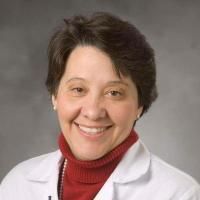Creating a win-win for the health system and health Profession's education: a direct observation clinical experience with feedback iN real-time (DOCENT) for low acuity patients in the emergency department.
Date
2022-01-27
Journal Title
Journal ISSN
Volume Title
Repository Usage Stats
views
downloads
Citation Stats
Attention Stats
Abstract
Background
Clinical education across the professions is challenged by a lack of recognition for faculty and pressure for patient throughput and revenue generation. These pressures may reduce direct observation of patient care provided by students, a requirement for both billing student-involved services and assessing competence. These same pressures may also limit opportunities for interprofessional education and collaboration.Methods
An interprofessional group of faculty collaborated in a sequential quality improvement project to identify the best patients and physical location for a student teaching clinic. Patient chief complaint, use of resources, length of stay, estimated severity of illness and student participation and evaluation of the clinic was tracked.Results
Clinic Optimization and Patient Care: Five hundred and thirty-two emergency department (ED) patients were seen in the first 19 months of the clinic. A clinic located near the ED allowed for patients with higher emergency severity index and greater utilization of imaging. Patients had similar or lower lengths of stay and higher satisfaction than patients who remained in the ED (p < 0.0001). In the second clinic location, from October 2016-June 2019, 644 patients were seen with a total of 667 concerns; the most common concern was musculoskeletal (50.1%). Student Interprofessional Experience: A total of 991 students participated in the clinic: 68.3% (n = 677) medical students, 10.1% (n = 100) physician assistant students, 9.7% (n = 96) undergraduate nursing students, 9.1% (n = 90) physical therapy students, and 2.8% (n = 28) nurse practitioner students. The majority (74.5%, n = 738) of student participants worked with students from other professions. More than 90% of students reported that faculty set a positive learning environment respectful of students. However, 20% of students reported that faculty could improve provision of constructive feedback. Direct Observation: Direct observation of core entrustable professional activities for medical students was possible. Senior medical students were more likely to be observed generating a differential diagnosis or management plan than first year medical students.Conclusions
Creation of a DOCENT clinic in the emergency department provided opportunities for interprofessional education and observation of student clinical skills, enriching student experience without compromising patient care.Type
Department
Description
Provenance
Subjects
Citation
Permalink
Published Version (Please cite this version)
Publication Info
Clay, Alison S, Erin R Leiman, Brent Jason Theiling, Yao Song, Blanca Blanca Iris Padilla, Nicholas M Hudak, Ann Michelle Hartman, Jeffrey M Hoder, et al. (2022). Creating a win-win for the health system and health Profession's education: a direct observation clinical experience with feedback iN real-time (DOCENT) for low acuity patients in the emergency department. BMC medical education, 22(1). p. 66. 10.1186/s12909-022-03133-z Retrieved from https://hdl.handle.net/10161/24308.
This is constructed from limited available data and may be imprecise. To cite this article, please review & use the official citation provided by the journal.
Collections
Scholars@Duke
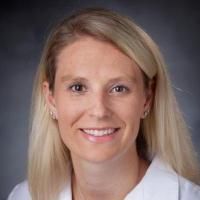
Erin Roxanne Leiman
Erin Leiman, MD is Assistant Professor, Director of Undergraduate Medical Education, and Medical Director of the Physician Assistant Residency Program in the Department of Emergency Medicine at Duke University School of Medicine. Dr. Leiman leads other undergraduate academic pursuits as the Assistant Director for the Duke Interprofessional Education and Care Center and the medical director of the Interprofessional Education Clinic that brings together interprofessional students and faculty to care for patients. She received her medical degree from Vanderbilt University and trained at the Harvard-affiliated program in Emergency Medicine at Beth Israel Deaconess Hospital in Boston where she was chief resident.
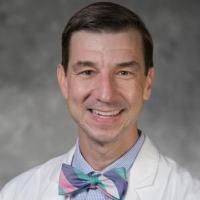
Brent Jason Theiling
Dr. Theiling is a board-certified emergency medicine physician with expertise in Emergency Department and hospital operations. He is currently the vice chair of operations for Duke University's Department of Emergency Medicine, as well as CSU Medical Director of the Emergency Services Clinical Service Unit for Duke University Hospital. This unit encompasses Duke's Emergency Department, Life Flight Critical Care transport teams, the Duke Trauma Center, Patient Transport and Emergency Management.
As an Associate Professor of Emergency Medicine at Duke University School of Medicine and works in providing high-quality emergency care.. Dr. Theiling also provides cutting-edge education to future emergency medicine providers, focusing on clinical emergency medicine and critical care, advancements in medical education and emergency department operations.
Dr. Theiling is also a member of the Duke Emergency Medicine Residency Core Faculty and has won multiple awards for his work in education and clinical care. He has over a dozen publications in peer-reviewed journals about clinical emergency medicine, advancements in medical education, emergency department operations and work with Duke Life Flight. He works closely with AMPA and is active in the organization.
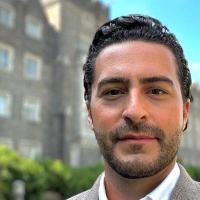
Nicholas Mark Hudak
Nicholas Hudak is an Associate Professor in the Department of Family Medicine and Community Health in the Duke University School of Medicine. He is faculty clinical coordinator with the Duke Physician Assistant (PA) Program, practicing PA in the Department of Neurology, and an Assistant Director in the Duke Center for Interprofessional Education and Care.

Jeffrey M. Hoder
Dr. Hoder is the Director of Student Affairs and an Associate Professor within the Doctor of Physical Therapy Program at Duke University. His primary responsibilities are directing DPT student support services, accommodations, and advising, as well as teaching within the foundational adult neurologic rehabilitation and the cultural determinants of health and health disparities course series. As a clinician and educator, his philosophy is to train compassionate and critical physical therapy clinical scientists to evaluate and manage individuals with complex neurological disorders. He strives to teach students to self-assess, self-correct, and self-direct to become lifelong independent learners; to guide students to become critical appraisers of medical information, research and technology; and to train students to treat individuals with the utmost respect and dignity. He received both his MSPT and DPT degrees from Rutgers University. Additionally, he received his clinical specialist board certification in Neurology through the American Board of Physical Therapy Specialties in 2003 and was recertified in 2013 and 2024. At Duke, his clinical areas focus on the management of gait and balance issues for individuals with movement disorders and central vestibular dysfunction.
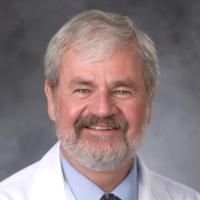
Edward George Buckley
Dr. Buckley is a native of Cincinnati, Ohio. He graduated from Duke University in 1972 with a BSE in Electrical Engineering. He received his MD degree from Duke in 1977 followed by a residency in ophthalmology. He then completed two fellowships, one in pediatric ophthalmology and the other in neuro-ophthalmology, both at the University of Miami Bascom Palmer Eye Institute returning to the faculty at Duke in 1983. He is currently the Chairman of the Department of Ophthalmology and the James P. and Heather Gills Professor of Ophthalmology, Professor of Pediatrics, and the Vice Dean for Education for the School of Medicine, overseeing all of the student education programs including the PA, DPT, Path Assistant and Masters of Clinical Research, Biostatistics, and Clinical Leadership. He was the Chief of both the Pediatric and Neuro-ophthalmology services for many years. He has been involved with the development of the Duke-National University of Singapore Medical School (Duke-NUS) education program since 2001 and currently Co-Chairs the Duke-NUS Academic Committee. He is the director of the pediatric ophthalmology fellowship program at Duke and has trained over 45 clinical and 10 research fellows.
Dr. Buckley has served as President of the American Association of Pediatric Ophthalmology and Strabismus (AAPOS), Chair of the American Board of Ophthalmology, Chair of the Section of Ophthalmology of the American Academy of Pediatrics, President of the American Orthoptic Society, and is the current Editor-in-Chief of the Journal of AAPOS. He has received the Life Time Achievement Award from the American Academy of Ophthalmology (AAO) and AAPOS. He has published/edited eight books, 40 book chapters, and over 120 peer-reviewed articles. He has given many prestigious named lectures including the Marshall Parks Lecture at the AAO, the Costenbader lecture at AAPOS and the Richard Scobee Memorial Lecture for the AACO. Although he is considered an expert in multiple aspects of pediatric ophthalmology, Dr. Buckley is perhaps best known for his research and clinical innovations involving the treatment of complicated strabismus and congenital cataracts.
Unless otherwise indicated, scholarly articles published by Duke faculty members are made available here with a CC-BY-NC (Creative Commons Attribution Non-Commercial) license, as enabled by the Duke Open Access Policy. If you wish to use the materials in ways not already permitted under CC-BY-NC, please consult the copyright owner. Other materials are made available here through the author’s grant of a non-exclusive license to make their work openly accessible.
